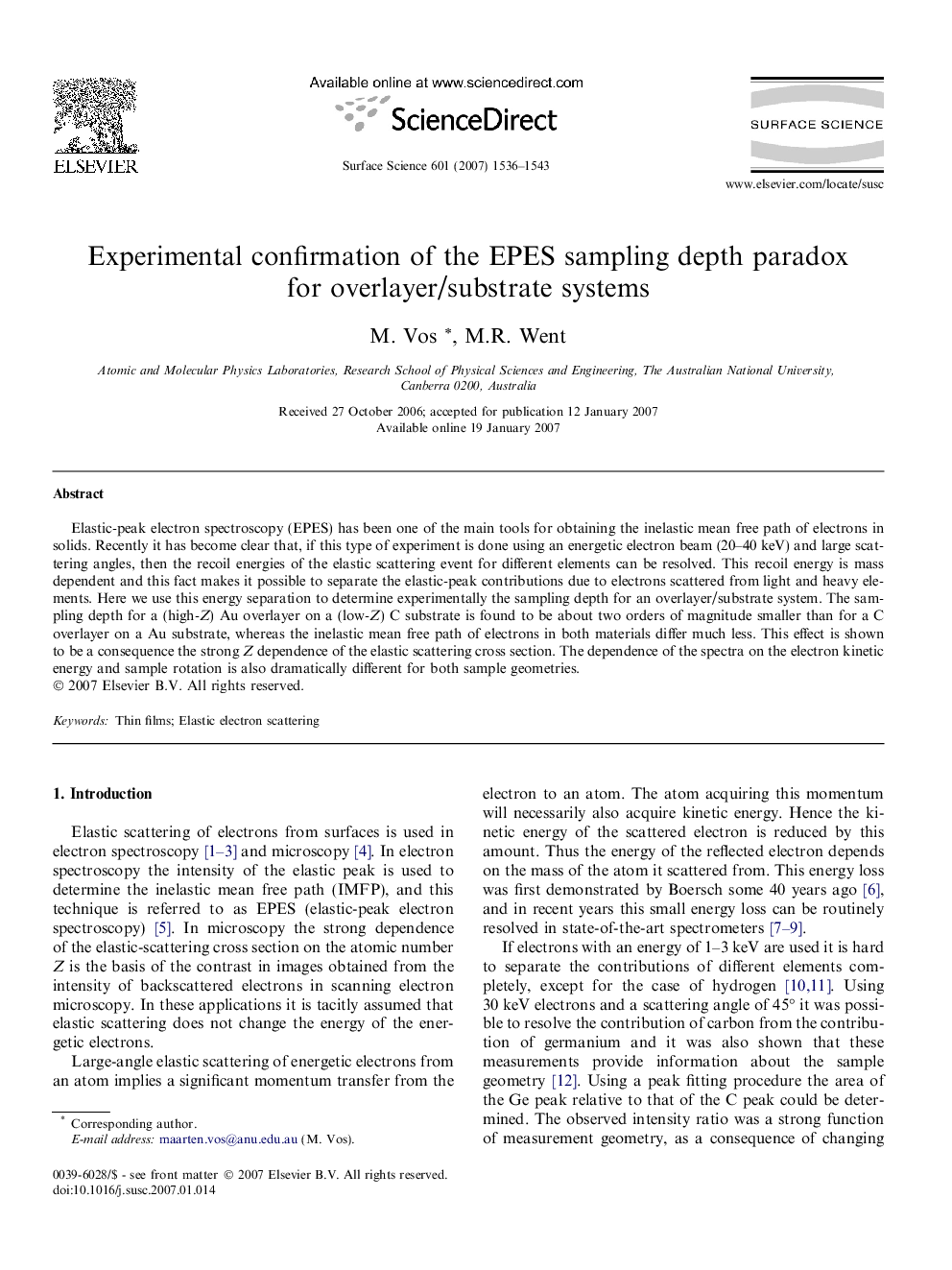| Article ID | Journal | Published Year | Pages | File Type |
|---|---|---|---|---|
| 5426116 | Surface Science | 2007 | 8 Pages |
Elastic-peak electron spectroscopy (EPES) has been one of the main tools for obtaining the inelastic mean free path of electrons in solids. Recently it has become clear that, if this type of experiment is done using an energetic electron beam (20-40Â keV) and large scattering angles, then the recoil energies of the elastic scattering event for different elements can be resolved. This recoil energy is mass dependent and this fact makes it possible to separate the elastic-peak contributions due to electrons scattered from light and heavy elements. Here we use this energy separation to determine experimentally the sampling depth for an overlayer/substrate system. The sampling depth for a (high-Z) Au overlayer on a (low-Z) C substrate is found to be about two orders of magnitude smaller than for a C overlayer on a Au substrate, whereas the inelastic mean free path of electrons in both materials differ much less. This effect is shown to be a consequence the strong Z dependence of the elastic scattering cross section. The dependence of the spectra on the electron kinetic energy and sample rotation is also dramatically different for both sample geometries.
